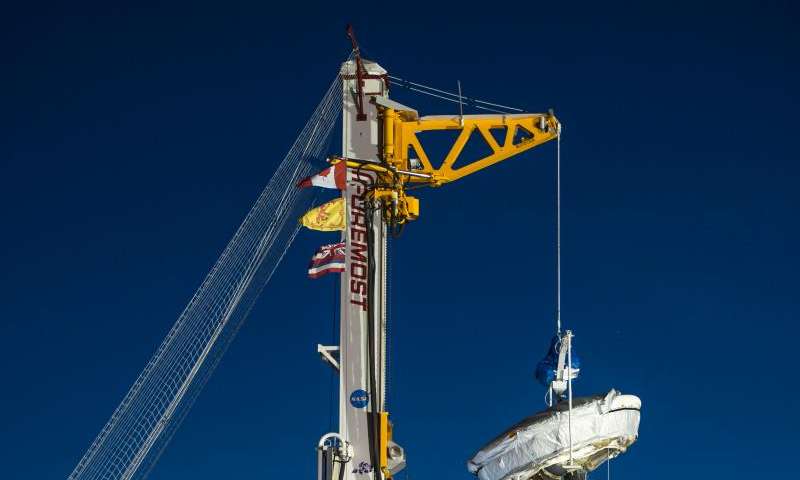
- At launch time, a giant balloon will carry the test vehicle to an altitude of 120,000 feet (37,000 meters). After release from the balloon, a booster rocket will lift the disk-shaped vehicle to 180,000 feet (55,000 meters), during which it will accelerate to supersonic speeds.
- Traveling at about three times the speed of sound, the vehicle’s inner-tube-shaped decelerator, called a supersonic inflatable aerodynamic decelerator, will inflate and slow the vehicle. Then, at Mach 2.35, its parachute will inflate and gently carry the vehicle to the ocean’s surface.
- These devices potentially will help us deliver double the current amount of payload—1.5 metric tons—to the surface of Mars. They also will greatly increase the accessible surface area we can explore, and will improve landing accuracy from a margin of approximately 6.5 miles to a little more than 1 mile.